Osteochondrosis is a medical term that describes the violation of the surface integrity of bone cartilage. Most commonly, the disease is related to intervertebral disc damage.
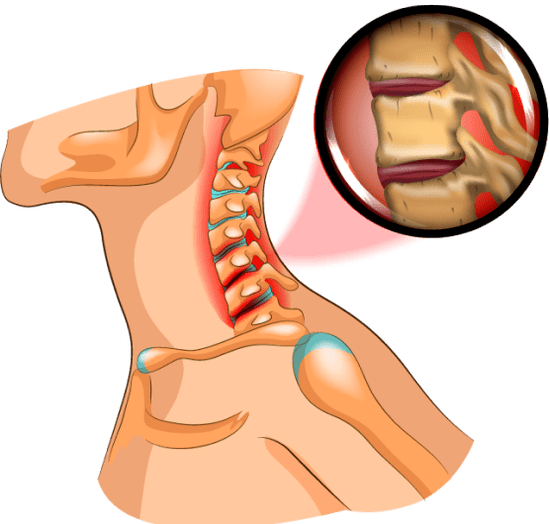
The intervertebral disc is a shock absorber that reduces the pressure on the spine under load. Osteochondrosis worsens the quality of life, causing pain in the back, neck, head, and tinnitus.
There are two views on diagnosis. Foreign experts attribute this disease to childhood and adolescent diseases. It is believed that it is more common in children due to the developmental stage of bones. Russian doctors diagnose osteochondrosis mainly in patients aged 25-55. In both cases, the signs, etiology and types of the disease are the same.
How to define osteochondrosis?
- Is there persistent or recurring back pain or muscle tension?
- Do you have chicken skin on your lower back or neck??
- Do you feel "shooting" with your back?
- Do you feel pain when raising your arms or shaking your head to the sides?
- Do you have periodic dizziness?
- Do you feel a blast of noise and nausea?
If there is at least one affirmative answer, it is worth contacting an expert for research. If the diagnosis indicates a violation, the doctor will prescribe treatment and help protect yourself from more severe and painful symptoms.
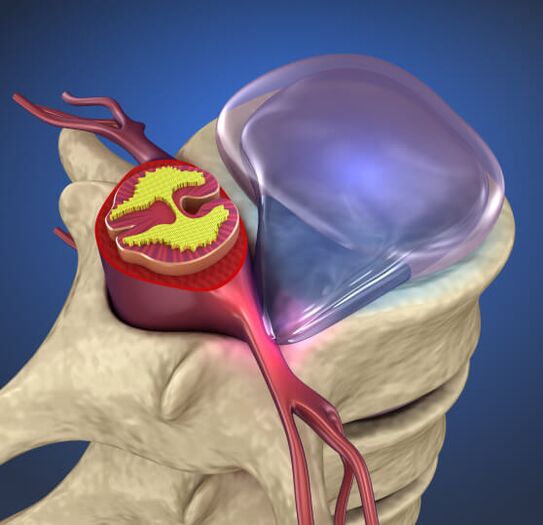
What causes osteochondrosis
The large number of osteochondrosis is related to people being upright most of the time. In this case, the pressure on the spine and intervertebral discs increases. If you sit, lie and stand incorrectly, the disc will lose its buffering ability.
Over time, the lining of the intervertebral disc will rupture and a herniated disc will appear. They begin to squeeze the blood vessels, the roots of the spinal cord or the brain itself. As a result, pain occurs and muscles reflect tension.
People at risk include middle-aged and elderly people. Office workers, professional drivers, and tall people most often suffer from this disease. The risk factors for serious illness symptoms can be:
- flatfoot;
- Genetic
- overweight;
- Lack of motivation.
Causes of articular cartilage disease:
Overload processing.
Improper posture when sitting, standing or lying down.
Injured, overworked.
Excessive stress during exercise.
High air humidity and low temperature.
Activities related to frequent changes in body posture.
Types of osteochondrosis
Osteochondrosis can develop in any part of the spine. By positioning, the disease is divided into: cervical spine, thoracic spine and lumbar spine. The latter type occurs in 50% of cases.
Lumbar osteochondrosis
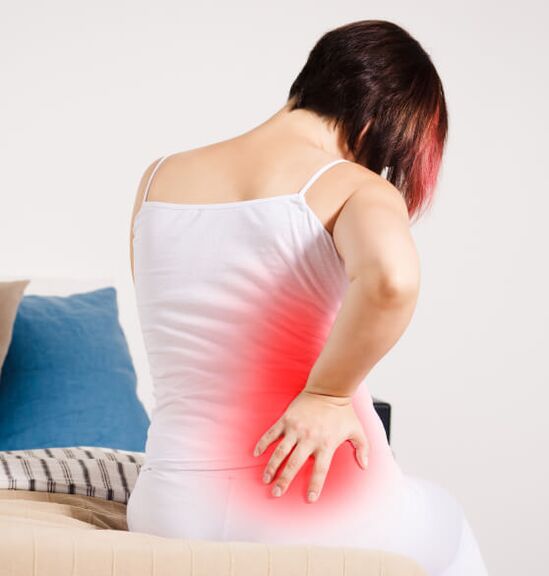
Both men and women have made similar diagnoses. The reason for this is the increased load that occurs when walking, running, exercising, and sitting for long periods of time. The lumbar spine consists of 5 vertebrae, between which there are intervertebral discs that provide elasticity. If the metabolic process does not occur, the intervertebral disc will lose its properties and pain will occur.
symptom:
- Severe or severe back pain can get worse with exercise.
- Pain in the legs, pelvic organs, and bone area.
- Impaired mobility or impaired sensitivity.
- The leg muscles atrophy during the acute course of the disease.
Lumbar osteochondrosis must be treated. Without treatment, dangerous complications may occur: sciatica, hernia, herniation. As a result, the natural blood supply of the spinal cord is disrupted, which leads to paralysis of the lower limbs.
Cervical Chondrosis
"Be sure to turn your head"-urged by the doctor. This can avoid the dangerous diagnosis of cervical osteochondrosis. The neck is the most mobile part of the spine. The section consists of 7 vertebrae. The disease appears due to the body's metabolic disorder, the presence of salt in the neck or the frequent discomfort of the head.
symptom:
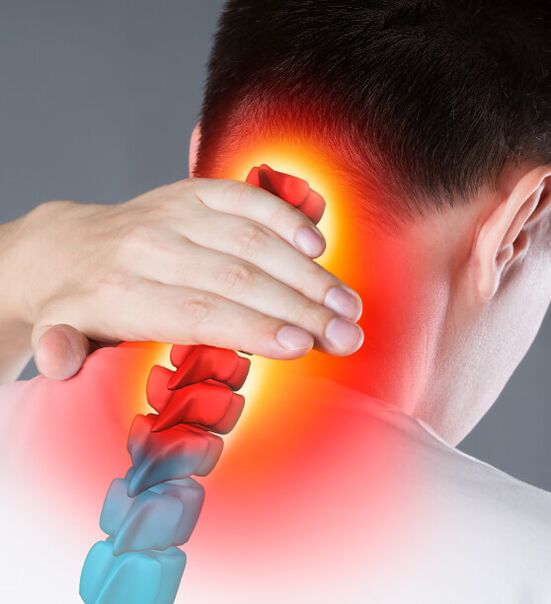
- headache;
- Pain in the heart area;
- "Flies" flashed in front of my eyes;
- Hearing loss;
- Cervical spine tightening;
- Pain in the arm or shoulder joint;
- Numbness in limbs.
Experts point out that this disease is one of the most dangerous diseases, because it can cause poor cerebral circulation, migraines, dystonia and more serious diseases.
Sternal osteochondrosis
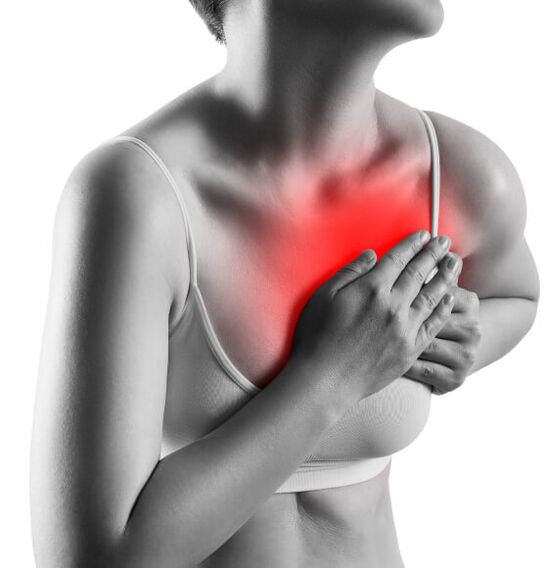
Because the vertebrae are not moving, the frequency of interference in the thoracic spine is low. Many people who are engaged in hard physical work or sedentary will experience pain in this part of the body. The cause of osteochondrosis may be that the metabolic process is blocked and the load of the intervertebral disc is increased.
symptom:
- Pain or tightness in the chest.
- When I raise my arm, there is pain between the shoulders and bones.
- Sensitive skin diseases.
In an acute illness, two symptoms may occur: back pain and back pain. Dorsago was accompanied by acute chest pain and shortness of breath. In the case of back pain, the pain in the vertebral area is not too strong, but gradually worsens. The disease is often confused with other chest diseases: heart disease, pneumonia, angina, etc. Diagnosis can only be made by experts based on inspection and research.
Stages of osteochondrosis
- In the first stage, there are no obvious symptoms. Periodically, there will be discomfort in the spine, which is related to fatigue or excessive physical exertion. The disease can be detected in routine examinations, X-rays or CT scans.
- The second stage is accompanied by pain syndrome, because the destruction process of cartilage tissue begins and the space between the intervertebral discs decreases. Medication prescribed by a doctor can relieve the pain at this stage.
- In the third stage, the spine begins to deform: the annulus fibrosis breaks and intervertebral hernia appears. With proper prescription treatment, it is still possible to improve the condition of the spine.
- The fourth stage is irreversible changes in the spine, making it difficult for people to move. Bone tissue grows between the vertebrae, connecting the vertebrae. Most commonly, this form of osteochondrosis can cause disability.
diagnosis method
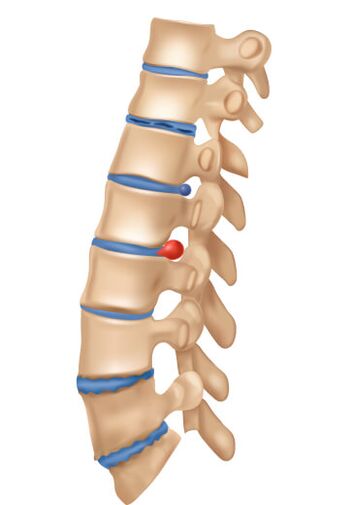
In order to determine the extent of the disease and check sensitivity and reflex, the doctor performed a physical examination. In addition, blood and urine tests were performed, and indicators of calcium metabolism were studied.
In order to make an accurate diagnosis, the following diagnosis methods are used:
- Vascular ultrasound. Determine the degree of impaired blood flow in the vertebral artery.
- X-ray of the spine.
- UKT. Construct a three-dimensional image of the study area to detect small displacements of the vertebrae.
- UMRI. Study the state of soft tissues to assess the state of the spinal cord and visualize the internal structure of the intervertebral disc.
treatment

Osteochondrosis is fully treated. The main purpose of treatment is to suppress pain and eliminate muscle tension and stiffness caused by pain. The important thing is not to self-medicate, but to consult an expert and follow the advice.
To treat the spine, doctors prescribe non-steroidal anti-inflammatory drugs to help reduce inflammation and swelling. Muscle relaxants can reduce muscle spasms. Ointment is used to relieve pain. You can prescribe some antioxidants and vitamins to protect nerve tissue.
prevention
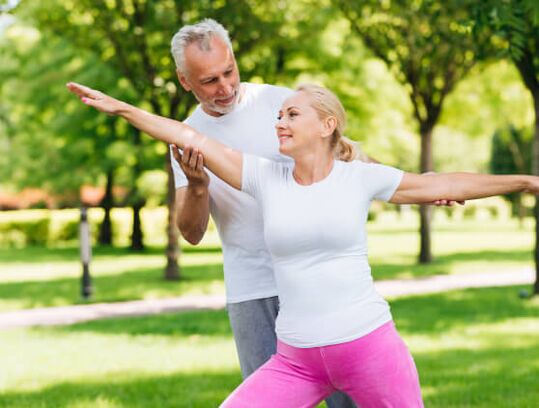
By following the following prevention methods, you can protect the health of the spine and prevent the symptoms or complications of osteochondrosis:
- Drink enough water; control weight; control weight.
- Eat foods rich in collagen;
- Choose an orthopedic mattress that supports the body;
- Exercise regularly.
You can try other methods: acupuncture, qigong or massage. Before starting any procedure, you should consult a doctor to ensure the health of the musculoskeletal system.























